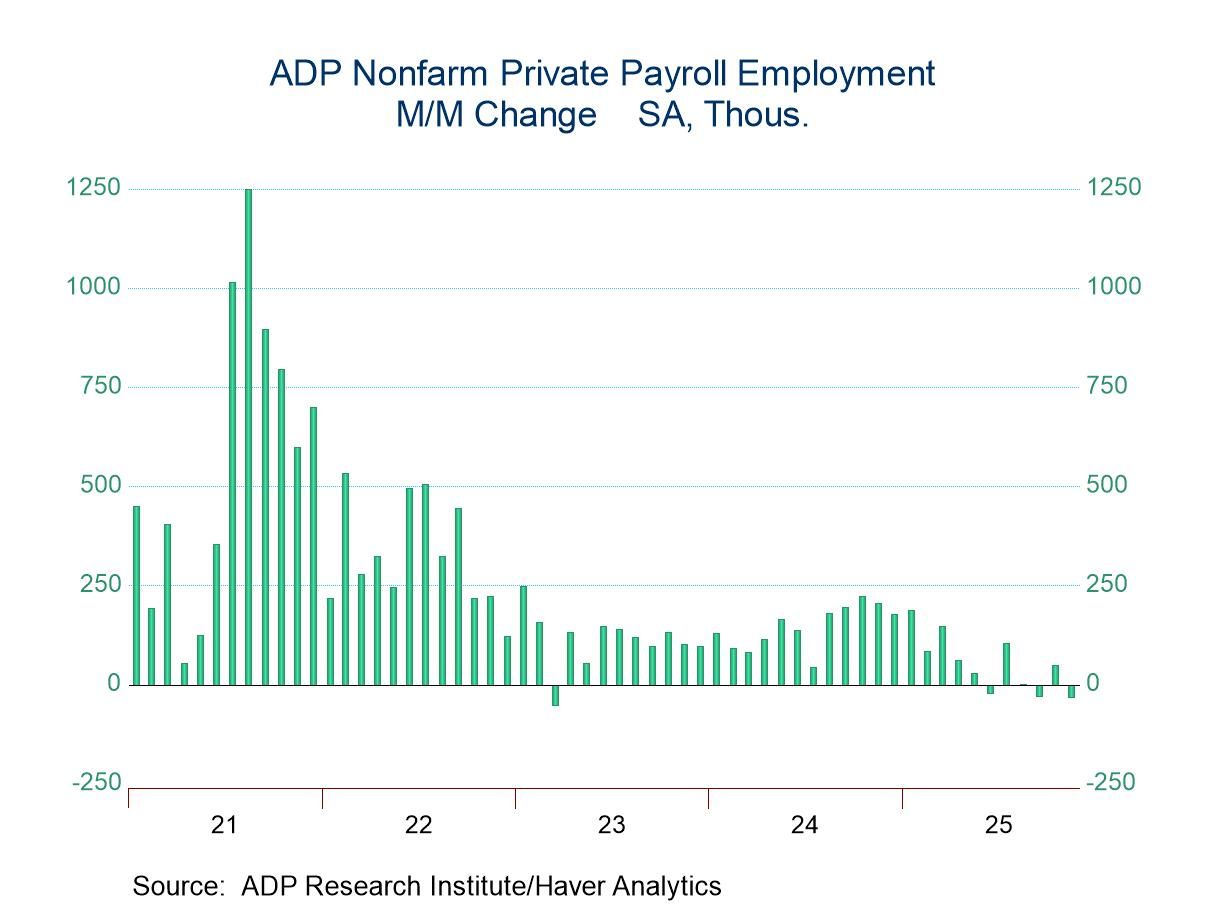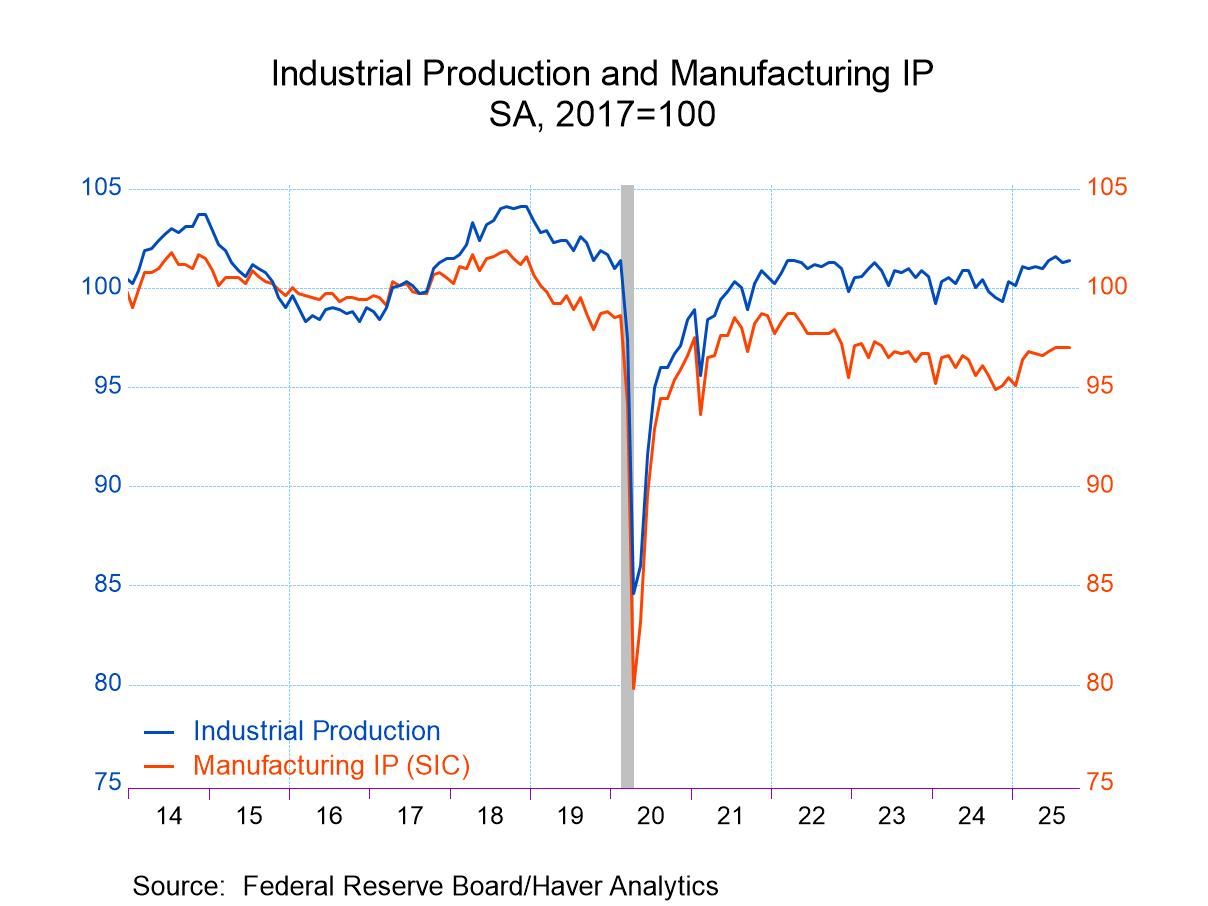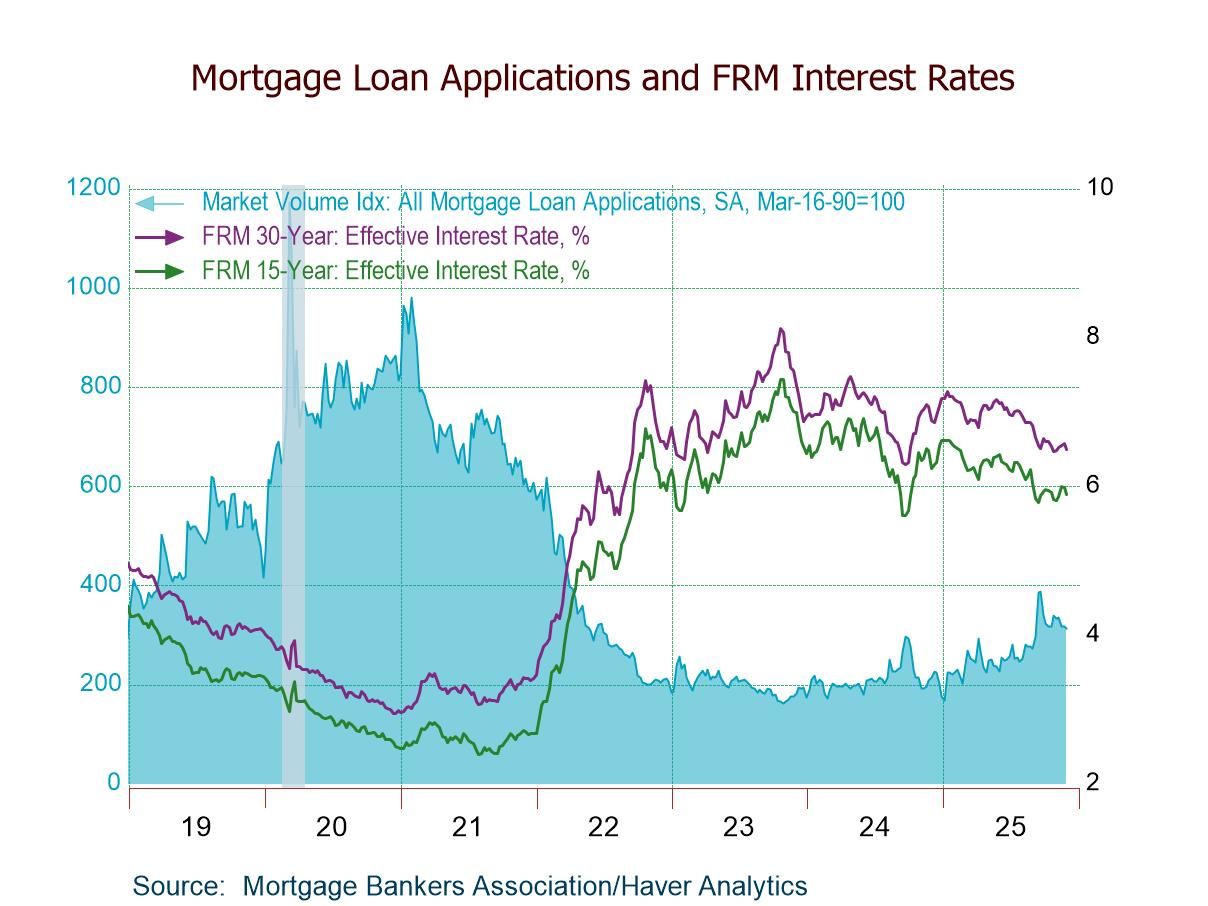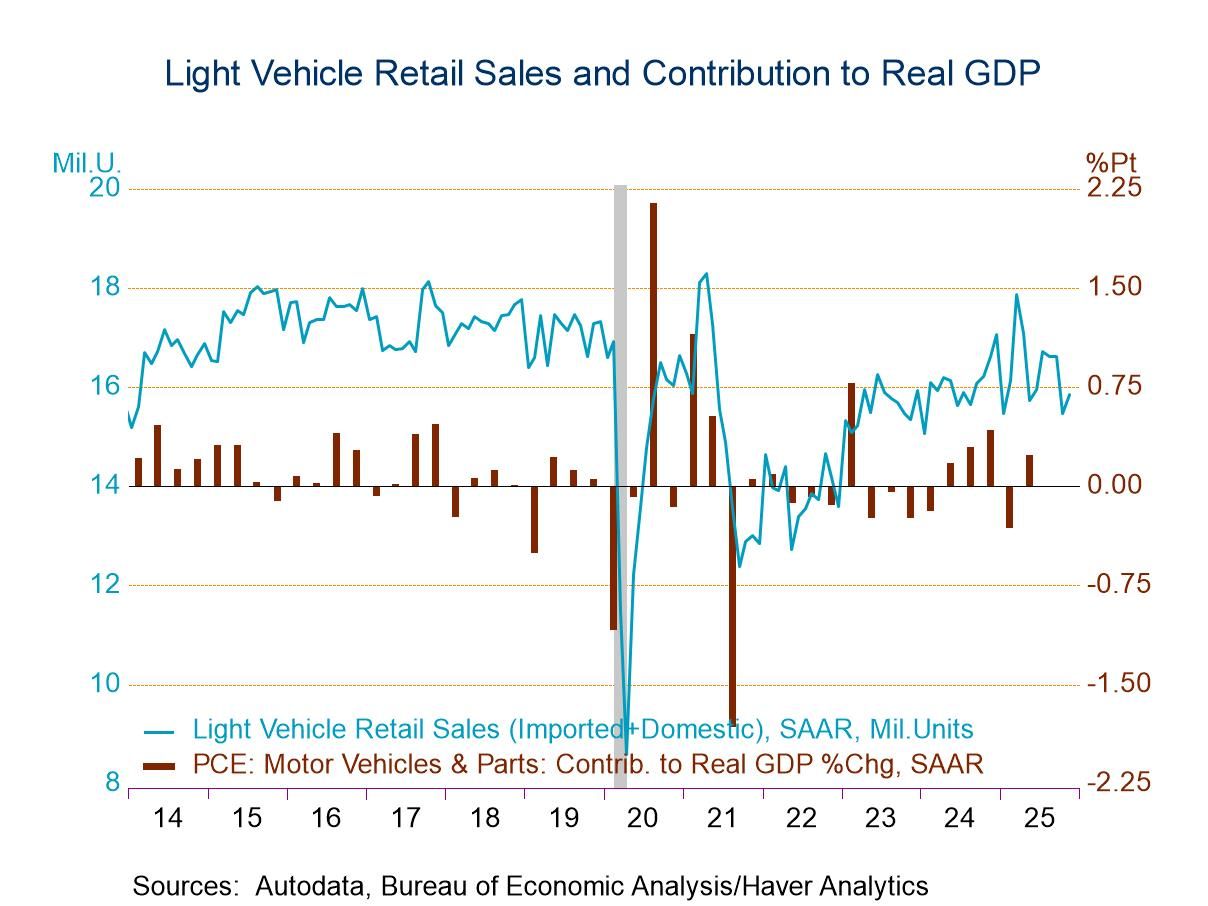U.S. Current Account Deficit Deepens Further in Q3
by:Tom Moeller
|in:Economy in Brief
Summary
- Deficit is largest in 15 years.
- Goods & services balances both deteriorate.


The U.S. current account deficit widened to $214.8 billion in Q3'21 from $198.3 billion in Q2'21, revised from $190.3 billion. It was the deepest deficit since Q3 2006. The Action Economics Forecast Survey anticipated a $203.7 billion deficit. As a percent of GDP, the deficit rose to 3.71%, the deepest since Q4 2005 when it was 6.29% of GDP.
The deficit in goods trade rose to a record $274.8 billion as exports grew 1.1% (23.8% y/y) in Q3. Industrial supplies & materials exports increased 3.9% (46.1% y/y) and nonauto consumer goods rose 9.0% (28.5% y/y). Food, feeds and beverages exports declined 8.5% (+6.5% y/y), autos, parts and engines exports fell 1.4% (-5.7% y/y) and capital goods exports eased 0.7% (+16.8% y/y). Imports of goods rose 1.4% (19.0% y/y) in Q3. Imports of industrial supplies and materials increased 8.0% (63.3% y/y) as oil prices rose. Foods, feeds and beverage imports rose 2.7% (19.6% y/y) while capital goods imports strengthened 1.2% (16.7% y/y). Auto and parts imports fell 4.1% (-1.8% y/y) while nonauto consumer goods declined 1.8% (+11.5% y/y).
The surplus on services trade deteriorated sharply to $49.9 billion in Q3, the smallest surplus since Q4'11 and down from the peak $78.9 billion surplus in Q1'18. Services exports eased slightly (+14.7% y/y). Travel exports increased 1.6% (54.8% y/y) but export charges for the use of intellectual property declined 5.8% (+2.7% y/y). Imports of services improved 9.8% (30.3% y/y), reflecting a 47.3% rise (379.3% y/y) in travel imports. Import charges for the use of intellectual property increased 8.2% (6.6% y/y).
The surplus on primary income rose to $48.2 billion in Q3. Investment income receipts rose 6.8% (17.4% y/y) while investment income payments increased 3.7% (21.8% y/y). The deficit on secondary income deepened to $38.0 billion.
Balance of Payments data are in Haver's USINT database, with summaries available in USECON. The expectations figure is in the AS1REPNA database.
A Hopeless and Imperative Endeavor: Lessons from the Pandemic for Economic Forecasters by Fed Governor Christopher J. Waller is available here.


Tom Moeller
AuthorMore in Author Profile »Prior to joining Haver Analytics in 2000, Mr. Moeller worked as the Economist at Chancellor Capital Management from 1985 to 1999. There, he developed comprehensive economic forecasts and interpreted economic data for equity and fixed income portfolio managers. Also at Chancellor, Mr. Moeller worked as an equity analyst and was responsible for researching and rating companies in the economically sensitive automobile and housing industries for investment in Chancellor’s equity portfolio. Prior to joining Chancellor, Mr. Moeller was an Economist at Citibank from 1979 to 1984. He also analyzed pricing behavior in the metals industry for the Council on Wage and Price Stability in Washington, D.C. In 1999, Mr. Moeller received the award for most accurate forecast from the Forecasters' Club of New York. From 1990 to 1992 he was President of the New York Association for Business Economists. Mr. Moeller earned an M.B.A. in Finance from Fordham University, where he graduated in 1987. He holds a Bachelor of Arts in Economics from George Washington University.






